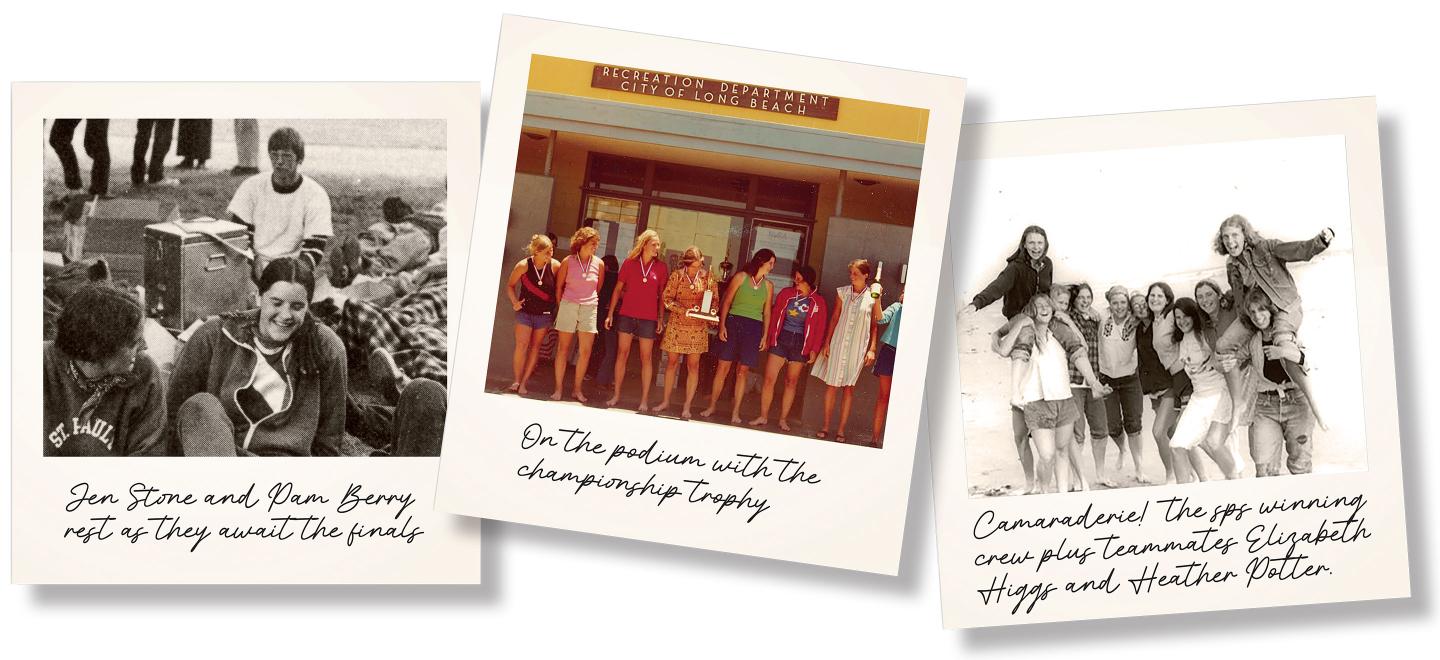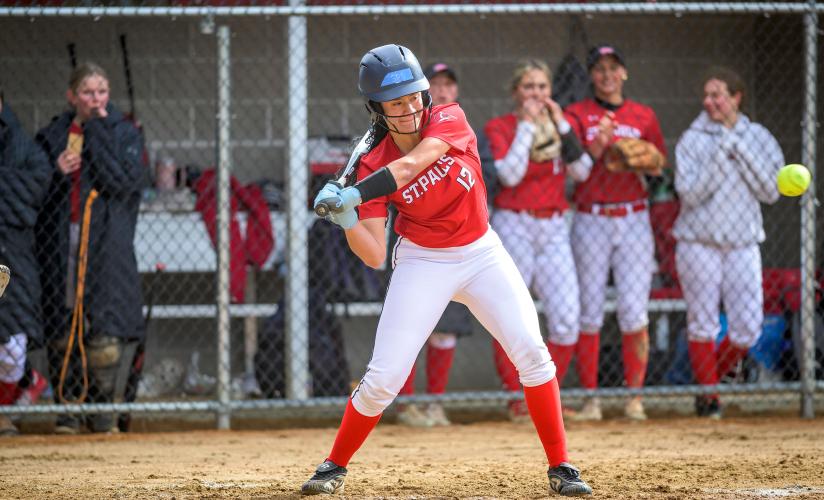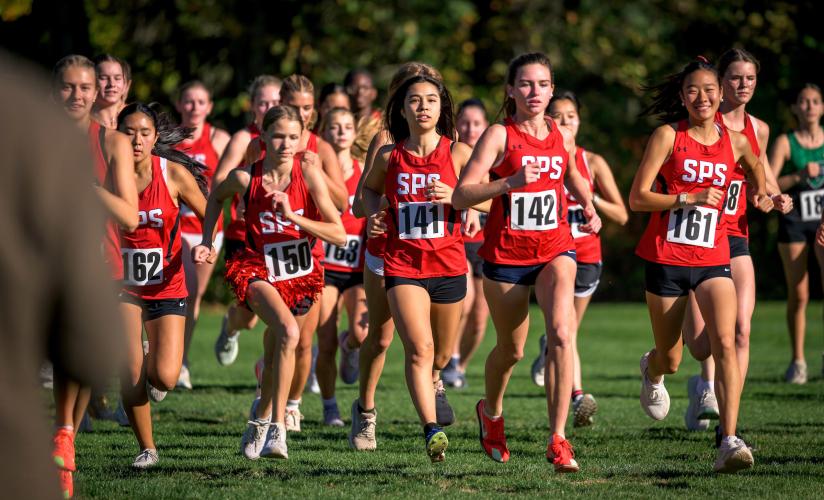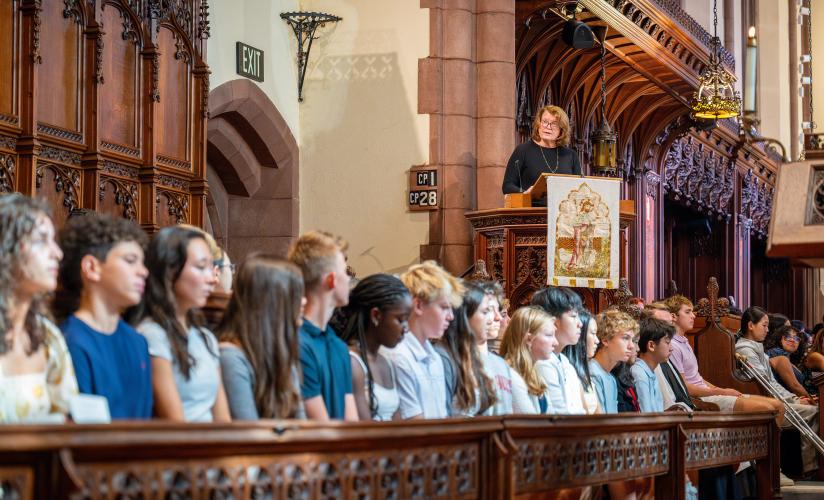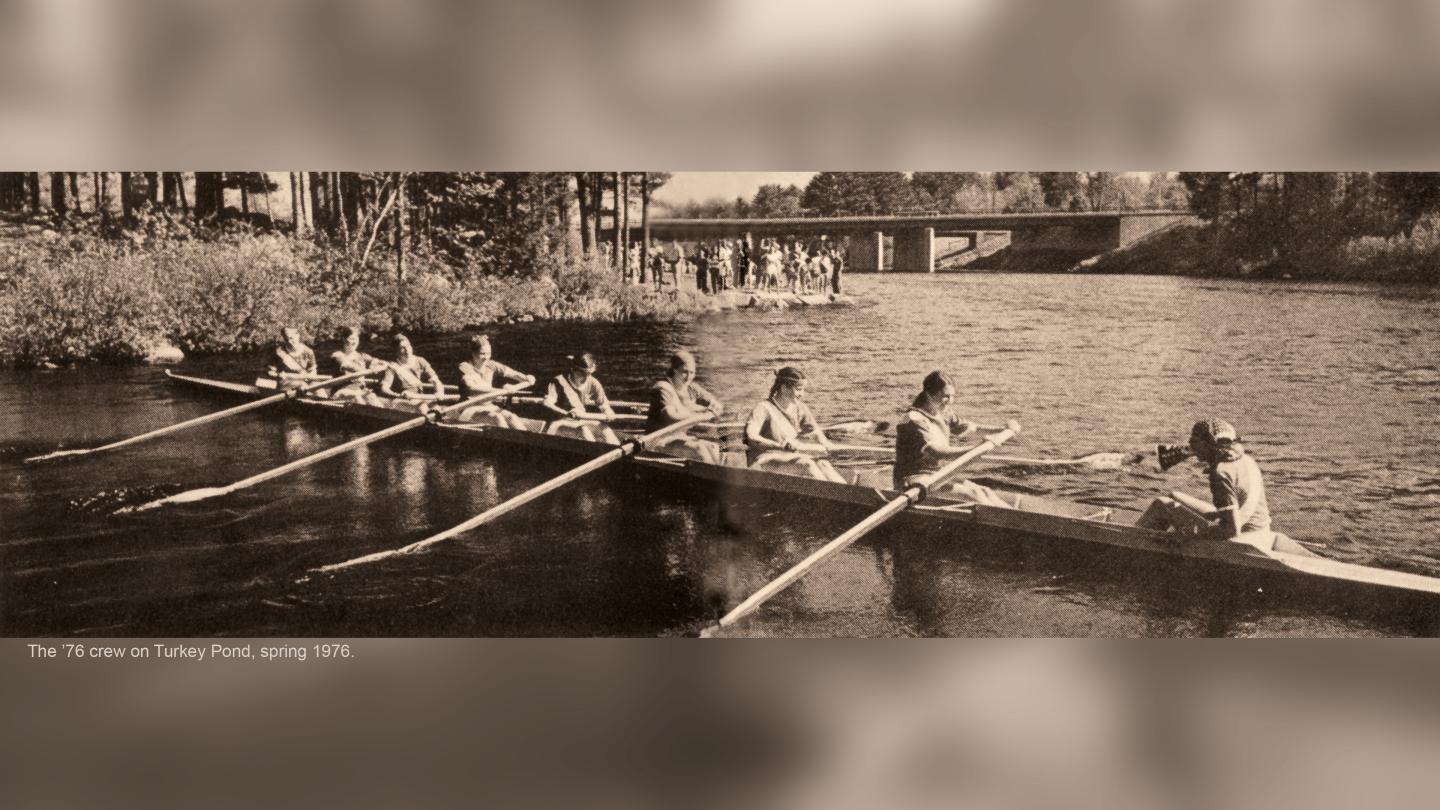

In 1976, one of the School’s first girls crews broke barriers — and won a national championship.
BY JIM GRAHAM
Like most of her teammates, Marny Kittredge ’76 hadn’t known any female rowers, much less sat in a rowing shell, before she signed up for girls crew at St. Paul’s School in 1973. That’s not too surprising. Until the early 1970s, girls across the country had few opportunities in crew and in most other sports.
But change was in the air, and in the water. St. Paul’s had launched its first girls crew just a year earlier, in 1972, and already, there was something about these girl rowers and their gritty athleticism, the mesmerizing sight of their shell slicing through glassy Turkey Pond and the rhythm of their powerful strokes that made Kittredge and a handful of others like her want to join them.
“I was always athletic and sort of pushing the limits,” says Kittredge who had excelled in gymnastics, basketball, tennis and other sports growing up in Michigan. “I also love being on a team and the kinds of athletic endeavors that really challenge you to do things you didn’t think you could do. And crew seemed to have all of that.” Starting a girls crew program in 1972, the same year it introduced coeducation, put SPS at the forefront of a nationwide movement to promote parity between the sexes in sports. It was the year that the landmark federal Title IX law went into effect, requiring schools that receive federal funding to provide equal participation opportunities regardless of sex. While Title IX did not apply to SPS, the public campaign for its passage spurred a tremendous surge in participation in both public and private schools.
For Kittredge and the other girls in the boat at SPS, however, participation wasn’t enough. They wanted to win.
Just four years after the program started, the SPS girls took gold in the high school varsity eight race in the 1976 Women’s National Rowing Championships in Long Beach, California, beating the defending champions by two boat lengths and setting a national record by an astonishing eight seconds. The performance capped a season in which they went undefeated against high school competition — and also beat several highly ranked collegiate teams in open races.
Coach David Harman knew his team was something special early in that season. “It was just one of those rare confluences of great athletes with a great work ethic that happened to come together at the right time and the right place,” says Harman, who also was the School’s director of counseling, an English teacher and a junior varsity hockey coach. A collegiate rower himself, in 1971 Harman had captained Harvard’s undefeated men’s varsity eight.
Since 1974, SPS girls have won 14 first boat gold medals in the New England Interscholastic Rowing Association (NEIRA) championships — more than any other school — nine NEIRA team championships Points Trophies and four Peabody Cups at the Women’s Henley Regatta in England. Many SPS girls have gone on to row in college, and several have competed in the Olympics, including Alison Rusher ’14, who competed in the women’s quad in 2020, and Juliet Thompson Hochman ’85, who competed in the women’s eights in 1988. Samantha Magee Bowerman ’01 won a silver medal at the 2004 Olympics and a gold in the 2007 World Championships, rowing in the eights with Team USA.
Talk with members of the 1976 team today, and they will rattle off the names of their teammates without prompting, making sure you know that they share equal credit for that remarkable season: Ann Jenkins, coxswain; Jenny Stone, stroke; Pam Berry, seventh seat; Penelope (Place) Gleason, sixth; Jen Chardon, fifth; Karla Drewsen, fourth; Cindy Wondolowski, third; Kittredge, second; and Tilda Essig, bow. All were Sixth Formers. Two other SPS athletes, Elizabeth Higgs ’76 and Heather Potter ’77, also rowed in the nationals as a pair. But without a high school category for pairs, they raced against Olympians and collegiate rowers and missed making the finals.
Forty-seven years later, members of the 1976 girls eight don’t necessarily recall their stroke rate, record-setting time or the other teams in the race. What they do remember is that it was painful, the hardest they had worked in their lives, and also the best that they had rowed as a team. Even now, they can still feel that sense of flowing as one, a magical experience they’ll always cherish.
“Rowing is an easy sport to fall in love with,” says Drewsen, who went on to row at the University of Pennsylvania and earned the stroke seat — widely considered the most important in setting both the rate and rhythm of the boat — with the 1980 U.S. Olympic Team … the year, unfortunately, that the U.S. boycotted the Games. “I had played and enjoyed other sports, but in rowing, I could find the flow. I could push my body as hard as I could and be part of a team. And when you feel all the other women pushing in the boat together like that, it’s really something special.”
Early in their season, the girls had heard there were some skeptics among older alumni about their ability to train and row competitively. But they also knew they could count on support from both the boys and girls rowing coaches, as well as from Susanne Fortier, who had been hired by the School to serve as its first coach for girls sports in 1971.
“We were breaking the barriers of limitations put on women. We did get some negative feedback from a few old alumni who didn’t approve of girls rowing — but did we show them!” says Gleason, noting the support the team received not just from their coaches but also from proud parents and many other advocates. Our sense of camaraderie and group focus pushed us to higher heights.”
Essig was one of the few with rowing experience when she came to SPS. She had been a member of the girls crew team at the Baldwin School in Bryn Mawr, Pennsylvania, which won the national championship in 1973.
“When I was at Baldwin and saw girls out rowing for the first time, I could see that they had such a great spirit of camaraderie,” Essig says. “And I could just sense that they were all really engaged in what they were doing and working together. Even when they weren’t in the boat, the way they were as a team was something special. I was intrigued.”
Essig recalls telling Fortier, who had been a three-sport standout athlete in college, that she thought the 1976 team had the potential to win nationals. As the team’s winning season progressed, Fortier and the coaches rallied the School behind them, and during a spring Chapel, the community learned that the team was Nationals-bound.
Women first rowed in the Olympics in 1976, and rowers selected for the U.S. Olympic team were also in Long Beach for the Women’s National Rowing Championships. After their races, those athletes watched and cheered as the SPS girls eight covered the 1,000-meter high school course in 3 minutes, 27.9 seconds — a time that would have made them competitive in the open eight event.
Harman wrote about the team’s reaction in the summer 1976 issue of Alumni Horae:
“The girls rowed triumphantly back to the dock and proceeded to send both coxswain Jenkins and Coach Harman into the Pacific, in the winners’ traditional post-race dunking ceremony.”
